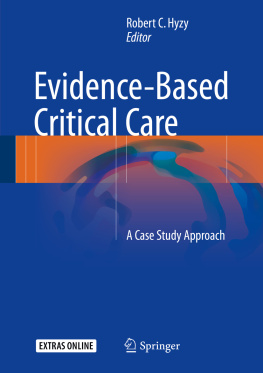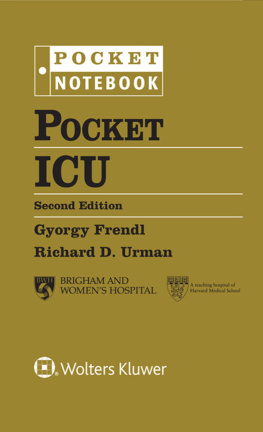1. Evidence Based Critical Care
Before medicine developed its scientific basis of pathophysiology, clinical practice was learned empirically from the events of daily experience in diagnosing and treating the maladies patients presented. Students learned as apprentices to clinicians, observing the phenomena of disease, the skill of diagnosis and treatment, and the outcomes of different remedies. Sir William Oslers classic textbook of medicine was based almost entirely on his personal experience correlated with the general experience of others []. Numerous ineffective and harmful therapies have been abandoned as a consequence of RCTs, while others have become integral to the care of patients and have become regarded as the standard of care.
Many RCTs are, however, inconclusive or provide conflicting results. In this situation systematic reviews that are based on meta-analysis of published (and unpublished) RCTs are clearly the best strategy for appraising the available evidence. While meta-analyses have many limitations, they provide the best means of determining the significance of the treatment effect from inconclusive or conflicting RCTs (as well as trials that demonstrate a similar treatment effect). Furthermore, as a result of publication bias positive studies are more likely to be published and usually in more prestigious journals than negative studies. A clinician may base his/her therapeutic decisions on these select RCTs which may then lead to inappropriate patient care. It is therefore important that common medical interventions be systematically reviewed and the strength of the evidence (either positive or negative) be evaluated. Although over 250,000 RCTs have been performed, for many clinical problems, there are no RCTs to which we can refer to answer our questions. In these circumstances, we need to base our clinical decisions on the best evidence available from experimental studies, cohort studies, case series and systematic reviews.
Alert
Be cautious in the interpretation of retrospective before-after studies and small single-center unblinded RCTs [].
And lastly, If a study seem too good to be true, it is likely too good to be true [].
Every decision that the clinician makes must be based on sound scientific evidence (a collection of anecdotes is not scientific evidence). Science is the continuing effort to discover and increase human knowledge and understanding through disciplined research. Using controlled methods, scientists collect observable evidence, record measurable data relating to the observations, and analyze this information to construct explanations of how things work []. Intuition, anecdotes, common sense, personal biases, and clinical experience is not considered science and cannot be used to justify clinical decision making or therapeutic policies.
Evidence is not static; both the strength and direction of evidence change as new evidence becomes available. It is therefore important to keep an open mind and reevaluate the scientific basis and strength of what we think we know and how we practice. Furthermore, there is a hierarchy of evidence from anecdotes and clinical experience to strong irrefutable evidence (see Fig. ).
Fig. 1.1
The hierarchy of scientific evidence
Science progresses best when observations force us to alter our preconceptions
Vera Rubin, Astronomer, 1928
As critical care medicine has evolved into a discreet specialty that crosses anatomical and other artificial boundaries and deals with an enormous array of human conditions, it has become evident that to achieve the best outcomes for our very complex patients, all our clinical decisions should be based on the best available evidence. The complexity of the critically ill patient together with the vast armamentarium of therapeutic options available makes it essential that we critically evaluate established and emerging clinical practices. It is important that we challenge established dogma through thoughtful scientific enquiry. Many of our current practices are based on anecdotes which have been passed down from teacher to student and assumed to be the undeniable truth. It is important to realize that nothing stays the same, that knowledge and understanding march forward with no end in sight. Those who hang on to the past will get lost in the dark:
Life (and Medicine) is like riding a bicycle; you need to move forward to keep your balance
Albert Einstein, Theoretical physicist, 18791955
While Evidence Based Medicine (EBM) is frequently criticized as cook-book medicine, this is most certainly not the case. Rather, the best scientific evidence should be applied to the unique characteristics of each patient []. Clinical Practice Guidelines (CPGs), which are evidence-based and up-to-date, are useful in providing the clinician with direction, but should never be followed blindly. Rigid protocols and policies, have little place in clinical medicine.
Lastly, it is important to realize that Critical Care Medicine can only be practiced by close observation of the patient (at the bedside), by contemplation, and by the integration of a large data base of evidence-based medicine together with a good deal of humility.
References
Osler W. Preface. The principles and practice of medicine. 8th ed. New York: D. Appleton & Co.; 1918.
Sackett DL, Richardson WS, Rosenberg W, Haynes RB. Evidence-based medicine. How to practice and teach EBM. New York: Churchill Livingstone; 1997.
Rivers E, Nguyen B, Havstad S, et al. Early goal-directed therapy in the treatment of severe sepsis and septic shock. N Engl J Med. 2001;345:136877. PubMed CrossRef
Whippy A, Skeath M, Crawford B, et al. Kaiser Permanentes performance improvement system, part 3: multisite improvements in care for patients with sepsis. Jt Comm J Qual Patient Saf. 2011;37:48393. PubMed
Heyland DK, Murch L, Cahill N, et al. Enhanced protein-energy provision via the enteral route feeding protocol in critically ill patients: results of a cluster randomized trial. Crit Care Med. 2013;41:274353. PubMed CrossRef
van den Berghe G, Wouters P, Weekers F, et al. Intensive insulin therapy in critically ill patients. N Engl J Med. 2001;345:135967. PubMed CrossRef
Ionnidis JP. Research accomplishments that are too good to be true. Intensive Care Med. 2014;40:99101. CrossRef
Science. Wikipedia. 2013. http://en.wikipedia.org/wiki/Science. Accessed 12 Mar 2013.
Rissmiller R. Patients are not airplanes and doctors are not pilots [Letter]. Crit Care Med. 2006;34:2869. PubMed CrossRef
Laurance J. Peter Pronovost: champion of checklists in critical care. Lancet. 2009;374:443. PubMed CrossRef
2. Less Is More: The New Paradigm in Critical Care












